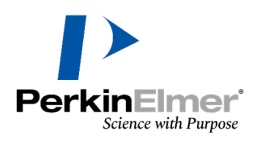方案详情文
智能文字提取功能测试中
Thermal analysis application notes: DSC Thermal analysis application notes DSCDifferential Scanning Calorimetry RigakuRigaku Corporation Contents 1. Outline 2. Application notes -1. Glass transition of a Polyethylene Terephthalate (PET) -2. Glass transition of a Butadiene rubber -3. Differences due to heat treatment -4. Melting of polyethylene -5. Hardening of epoxy resin -6. Gelatinization of starch -7. Structural transition in quartz -8. Specific heat capacity measurement -9. Kinetics Analysis by Ozawa Method -10. Purity Measurement -11.Oxidation Induction Time Measurement -12. Melting of chocolate -13. Melting of benzoic acid -14. Mechanochemical effect in pharmaceuticals 1.Outline Thermo plus EVO Ⅱ series are thermal analysis equipment developed for theimprovement of data stability, safety, operativeness, and fundamental performance. Thethermal analysis equipment is a necessary and an indispensable tool to obtain basic data onthe thermophysical property of a materials and is used in various field such as new materialsdevelopment and product evaluation; QC (quality control), etc. The high sensitivity differential scanning calorimeter (DSC) detects the change in thermalenergy generated in the sample when the sample is heated or cooled, providingreproducible data even in comparatively small amount of sample. 2. Application notes 2-1. Glass transition of a Polyethylene Terephthalate (PET) 工 The measurement result shown above is an example of a glass transition of anamorphous polyethylene terephthalate (PET). The usual glass transition appears as abaseline shift but a baseline shift accompanied withannendothermicpeakcalledenthalpy relaxationnnmay also be) observed..lIts peak size may change depending onthe cooling rate towards the glass transition temperature or the thermal hysteresis such asholding time below the glass transition temperature. Measuring the glass transitiontemperature provides an understanding of the sample’s thermal hysteresis. Also, theendothermic peak disappears or becomes smaller when the heated the sample above theglass transition temperature is reheated again. Therefore, heat the sample above the glasstransition temperature if necessary (1st run) and then reheat the sample (2nd run)afterapplying a constant thermal hysteresis. 2-2. Glass transition of a Butadiene rubber o Usually, rubber is an elastic material at room temperature. But the measurement result ofbutadiene rubberr showeda baseline shift duetoglassttransition at-93℃.In temperatures below the glass transition temperature for elastic materials such as rubber,it does not reveal its property as rubber but rather as an amorphous solid. 2-3. Differences due to heat treatment Shown above is a DSC measurement result of a copper wire coating material. Using DSCpeaks due to heat treatment maybe seen in the measurement of thermally treated castedmaterial. In the first run, after observing a baseline shift at-47℃ due to glass transition, anendothermic peak can be seen at 50℃. However in the second run, only the baseline shiftdue to glass transition can be found and that the endothermic peak disappeared. In thismanner, thermal behaviors brought by heat treatment (thermal hysteresis) can be observedin the first heating of thermally treated materials. Reheating the sample allows a constantthermal hysteresis and that only the sample’s original thermal behavior appears in thesecond run measurement. 2-4. Melting of polyethylene The measurement result above is a melting peak of high density polyethylene (HDPE)where the endothermic peak started near 20℃. The melting peak of low density polyethylene (LDPE) reveals an endothermic peakcontaining several peaks from 30℃. LDPE has a broad melting peak than HDPE. The figure above shows the melting and crystallization reaction of low linear densitypolyethylene (LLDPE) with a branching structure. Because melting in the second heatingdepends on the crystallization condition during the cooling process, nevertheless the patternof the melting peak obtained from the first heating is different. 2-5. Hardening of epoxy resin An exothermic peak due to hardening appears at 50℃. The graph below is a second run result of the first graph. In this measurement result, thebaseline shift due to glass transition is seen at 66℃ itin the hardened sample. 2-6. Gelatinization of starch The DSC measurement result of wheat flour in 30% aqueous solution showsseveral endothermic peaks at 52℃ due to starch gelatinization. 2-7. Structural transition in quartz An endothermic peak is seen at 571℃ revealing a structural transition of quartz fromform to B form. 2-8. Specific heat capacity measurement This is a DSC measurement result of a specific heat capacity measurement. Thespecific heat capacity of an empty pan, a sample with a known heat capacity and a samplewith an unknown heat capacity can be obtained through the ratio calculation of therespective amount of baseline shift when measured at a constant heating rate. 2-9. Kinetics Analysis by Ozawa Method 8 The measurement result above is a heating rate dependence of a hardening reaction of athermally-hardenedepoxy resin. Using Osawa data analysis method on the obtained DSCmeasurement result can evaluate the activation energy of the reaction. Also, the time required toreach the total change ratio can be calculated from the conversion of activation energy to time at aspecific temperature. 2-10. Purity Measurement Using DSC, the material's purity can be evaluated based on the material's melting temperature,amount of heat during melting and the melting ratio at all temperatures. In this case, a material withhigh purity will be used as a reference and temperature calibration will be performed from the slope ofthe melting peak. 2-11.Oxidation Induction Time Measurement This is an example of an oxidation induction time measurement in polyethylene. First, inert gas atmosphere will be flowed into the system up to the hold temperature. When the holdtemperature is reached, the atmosphere will be changed into oxidizing atmosphere and then the timeup to the formation of an exothermic reaction due to oxidation will be measured. This application isespecially used for stability assessment test thru oxidation of polyethylene used as a coveringmaterial of electric wires. 2-12. Melting of chocolate The graph above is a DSC measurement result of chocolate. In the chocolate measurement, the sample was heated until the melting reaction was completed,then it was cooled down at 5℃/min and the sample was reheated. Both first and second runmeasurement results showed endothermic peaks due to the melting of cacao butter in the chocolate.However, the temperatures as well as the amount of energy show differences in both measurements.Endothermic peaks were found at 28.2℃ with an energy of 53J/g and at 14.7℃ with an energy of29J/g in the first run and second run, respectively. The melting temperature and the energy arerelated to the crystalline structure. However, the formation of the crystalline structure depends on thecooling condition from the melted condition to crystallization. 2-13. Melting of benzoic acid The figure above is a DSC measurement of benzoic acid. The benzoic acid was measured using acrimped Al pan and a sealed Al pan. When the benzoic acid sample was measured in an crimped Alpan, it was observed that the baseline shifted towards the endothermic direction from 100℃ due tosublimation of benzoic acid. Then, an endothermic peak due to melting was seen at 120℃. But afterthe melting, the DSC signal did not return to the baseline, instead evaporation of benzoic acidcontinuously occurred. Baseline shifts due to sublimation and evaporation found in the crimped Al pan were not observedin the sealed Al pan except for melting reaction. Using a sealed pan suppresses reactions such assublimation and evaporation as described above, enabling the melting measurement for sublimingmaterials. 2-14 Mechanochemical effect in pharmaceuticals The figure above is an example of a DSC measurement result comparinga non-pulverized(original) and a pulverized (mill) pharmaceutical sample. In the DSC measurement result of the original or non-pulverized material, an endothermic peak dueto melting and an exothermic peak due to re-crystallization continuously occurred at 160℃, and thenan endothermic peak due to melting is seen at 180℃. On the contrary, the endothermic as well as theexothermic reaction at160℃ found in the non-pulverized (original)) are not observed in themechanically-pulverized (mill) sample and only the endothermic peak due to melting at 180℃ isfound. Both measurement results also show differences in endothermic peak caused by dehydrationnear room temperature. The external application of mechanical energy on the sample gives rise tophysical changes (mechanochemical effect) which may cause differences in measurement results. Headquarters and factory 3-9-12 Matsubaracho Akishima-shi Tokyo Japan 196-8666Telephone (042)545-8111 FAX (042)544-9795 Thermal Analysis Division Telephone (042)545-8127 (direct) FAX (042)545-7984 Tokyo branch 4-14-4 Sendagaya Shibuyaku Tokyo T151-0051 Tel (03)3479-6011 FAX (03)3479-6171 Osaka branch 14-8 Akaojimachi Takatsuki City Osaka T569-1146 Tel (0726)96-3387 FAX (0726)94-5852 Tohoku office 1-2-16 Omachi Aobaku Sendai City Miyagii T980-0804 Tel (022)264-0446 FAX (022)223-1977 Nagoya office 35-16 Daikancho Higashiku Nagoya City Aichi T461-0002 Tel (052)931-8441 FAX (052)931-2689 Kyushu office 2-1-1 Sakaicho Kokurakitaku Kitakyusyu City Fukuoka T802-0005 Tel (093)541-5111 FAX (093)541-5288 差式扫描量热仪用于测量有机高分子材料(塑料、橡胶、合成树脂、纤维、涂料、液晶、油脂)、医药、食品、无机材料(陶瓷、玻璃、建材、耐火材料、金属及合金)等:1)熔点2)玻璃化温度3)结晶度4)固化度5)纯度6)比热7)反应动力学8)热稳定性9)相转变温度
关闭-
1/17

-
2/17

还剩15页未读,是否继续阅读?
继续免费阅读全文产品配置单
北京赛思蒙仪器有限公司为您提供《高分子材料、金属材料中相转变温度、相转变热检测方案(差示扫描量热)》,该方案主要用于合成树脂/塑料中相转变温度、相转变热检测,参考标准《暂无》,《高分子材料、金属材料中相转变温度、相转变热检测方案(差示扫描量热)》用到的仪器有null。
我要纠错
相关方案

 咨询
咨询




